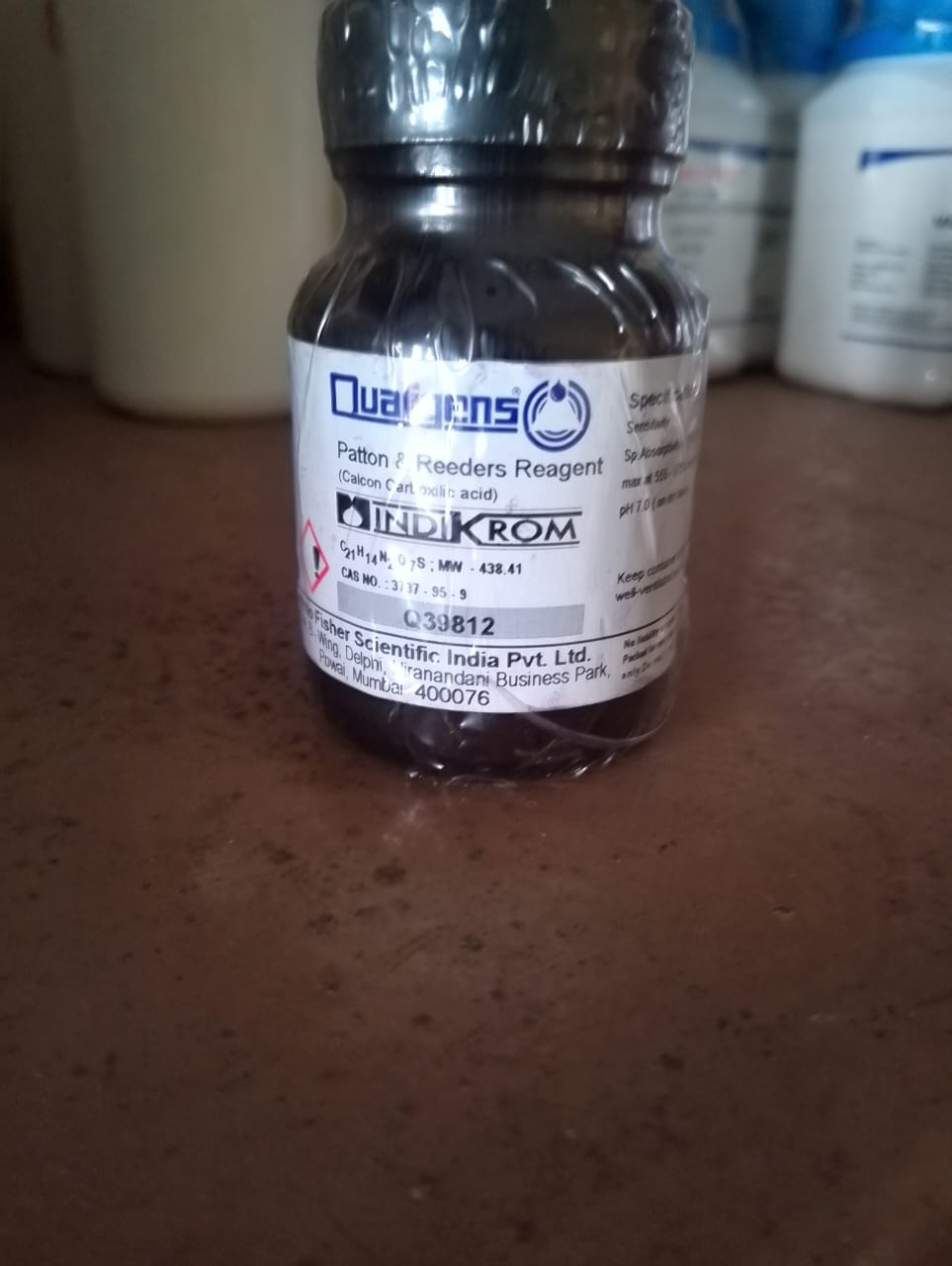
2024-12-27T07:34:29
Calconcarboxylic acid (IUPAC name 3-hydroxy-4-[(2-hydroxy-4-sulfonaphthalen-1-yl)diazenyl]naphthalene-2-carboxylic acid; commonly called Patton and Reeder's Indicator) is an azo dye that is used as an indicator for complexometric titrations of calcium with ethylenediaminetetraacetic acid (EDTA) in the presence of magnesium.[2] Structurally, it is similar to eriochrome blue black R, which is obtained from calconcarboxylic acid by decarboxylation and reaction with sodium hydroxide.[2] Properties Calconcarboxlic acid is soluble in water and a variety of other solvents, including sodium hydroxide, ethanol and methanol.[3] It has a violet colour in dissolved form in ethanol. The melting point of calconcarboxylic acid is at approximately 300 °C, where it undergoes thermal decomposition. Background Though the determination of calcium and magnesium by complexometric titration with standard solutions of disodium dihydrogen tetraacetate, utilising Eriochrome Black T as indicator is widely accepted and quite adequately understood, it, like other complexometric titration methods, suffers from the limitations of having an indistinct endpoint (where a photometric titrator is needed to provide acceptable accuracy) and/or having to separate the metals before titration can occur.[2] Calconcarboxylic acid was thus adopted as a superior alternative due to its ability to give a good and visual endpoint and its rapid performance even with the presence of magnesium. Synthesis As described by James Patton and Wendell Reeder in 1956, calconcarboxylic acid can be synthesised by coupling diazotized 1-amino-2-naphthol-4-sulfonic acid with 2-hydroxy-3-napthoic acid.[2]

Have a question? Ask here!
Required fields are marked *